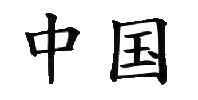China Beat Archive

China Beat Blog: Archive 2008-2012
Date of this Version
2011
Document Type
Article
Citation
2011 in The China Beat http://www.thechinabeat.org/
Abstract
In Shanghai Modern, Leo Lee, a prominent specialist in Chinese literary studies, focuses much of his attention on urban space as a marker of modernity in Republican Shanghai (1912-1949). His mappings of the city include places that are located mostly in the concessions, where Western (and later Japanese) influences dominated: the high-rise buildings in the Bund, the department stores located on or near Nanjing Road, and the cafes in the French Concession, as well as dance halls, public parks, race clubs, and cinemas. Lee also touches upon the lanes populated by native Chinese, but his main focus is on the elite literati culture of the pavilion rooms (tingzijian) inhabited by poor yet talented Chinese writers and artists. Lee’s mappings of Shanghai can be recapitulated in a sentence from Mao Dun’s famous novel Midnight (Ziye): “one saw with a shock of wonder on the roof of a building a gigantic NEON sign in flaming red and phosphorescent green: LIGHT, HEAT, POWER!” (Quoted in Lee, p. 3).
Included in
Asian History Commons, Asian Studies Commons, Chinese Studies Commons, International Relations Commons


Comments
Copyright 2011. Used by permission.